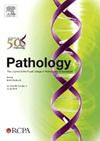传染病检测两种质量控制方法的成本效益分析。
IF 3
3区 医学
Q1 PATHOLOGY
引用次数: 0
摘要
利用20个外部质量控制结果的均值和标准差建立验收标准的传统质量控制结果监测方法在医学病理学中已被广泛接受。临床化学家几十年来一直使用Westgard规则来监测检测性能,现在已应用于传染病检测。然而,先前的报告表明,这种方法会产生频繁的“错误拒绝”,从而浪费时间和资源。本研究通过绘制5个月的质量控制活动来评估单个实验室中错误拒绝的真实成本。从2023年1月到2023年5月,一个实验室使用Bio-Rad Unity软件记录了所有不符合Westgard规则的QC结果。所有由QC失败引起的活动都被记录下来,成本以澳元计算。成本包括试剂、外部质量控制(EQC)、试剂盒控制和校准器的成本以及工作人员的时间。由于每个实验室有不同的定价结构,我们做了一些假设。实验室采用传统方法进行患者结果释放。在同一时期,EQC结果提交给EDCNet软件,并接受国家血清学参考实验室开发的QConnect限制。在研究期结束时,将传统EQC监测方法的结果与QConnect限值进行比较。这位资深科学家确定了哪些QC拒收是“真正的拒收”。在5个月的时间里,在两个不同的测试平台上使用的23个测试套件中的15个中,总共升起了70面旗帜。在这70个案例中,除了一个案例外,所有案例都对EQC样本进行了重复检测。其中17次QC样品检测超过3次。重新校准实验进行了12次,结果被提交给资深科学家6次。EQC的验收标准被重新设定了七次。在随后的调查中,这位资深科学家认为70面旗帜中只有一面是“真正的错误”。QConnect Limits也检测到了这一点。环保署在5个月期间进行的旗帜调查的费用计算为5个月约12,000元。根据12个月的时间推断,实验室进行EQC跟踪的额外费用估计约为28,700美元或每月约2,400美元。70次发作中有42次延迟公布患者结果。总的来说,在5个月的时间里,患者报告的累计延迟为每月68小时或816分钟。传统的EQC监测方法已不适应传染病检测的需要。这是因为在血清学测试中,预计会出现频繁的、正常的试剂批次之间的变化。如果接受标准过于严格,这些变化会导致频繁的“错误拒绝”,就像使用20个数据点建立限制的情况一样。错误拒绝的后果是资源和工作人员时间的浪费,实验室额外的、不必要的成本,以及延迟公布患者结果。本文章由计算机程序翻译,如有差异,请以英文原文为准。
Cost-benefit analysis of two quality control approaches for infectious disease testing
The traditional methods for monitoring quality control (QC) results of using the mean and standard deviation of 20 external QC results to establish acceptance criteria have been widely accepted in medical pathology. The use of Westgard rules to monitor assay performance has been used by clinical chemists for decades and is now applied to infectious disease testing. However, previous reports have indicated this approach creates frequent ‘false rejections’ leading to a waste of time and resources. This study evaluated the true cost of false rejections in a single laboratory by mapping the QC activities over a 5-month period. From January 2023 to May 2023 inclusive, a laboratory logged all QC results that failed Westgard rules using Bio-Rad Unity software. All activities arising from those QC failures were logged and the cost calculated in Australian dollars. The costs included the cost of reagents, external quality control (EQC), kit control and calibrators, and the staff time. As each laboratory has different pricing structures, certain assumptions were made. The laboratory used the traditional methods for patient result release. Over the same period, the EQC results were submitted to EDCNet software and subjected to National Serology Reference Laboratory-developed QConnect Limits. At the end of the period, the outcomes of the traditional approach to EQC monitoring were compared with QConnect Limits. The senior scientist identified which QC rejections were ‘true rejections’.Over the 5-month period, there were a total of 70 flags raised across 15 of the 23 test kits used on two different test platforms. All but one of the 70 episodes resulted in repeat testing of the EQC sample. On 17 occasions, the QC sample was tested more than three times. Recalibration of the assay occurred 12 times, and the results were referred to the senior scientist six times. The acceptance criteria for the EQC were re-set seven times. After ensuing investigations, only one of the 70 flags was deemed to be a ‘real error’ by the senior scientist. This was also detected by QConnect Limits. The cost of EQC flag investigations over the 5-month period was calculated to be just under $12,000 for 5 months. Extrapolating this to a 12-month period, the additional cost to the laboratory for EQC follow-up was estimated to be approximately $28,700 or about $2,400 per month. Delays in the release of patient results occurred in 42 of 70 episodes. In total, over the 5-month period, the accumulated delay in patients' reports was 68 h or 816 min per month. The use of traditional methods for the monitoring EQC is not fit for purpose of infectious disease testing. This is because frequent, normal reagent lot-to-lot variation is expected in serology tests. These changes cause frequent ‘false rejections’ if the acceptance criteria are too tight, as is the case when using 20 data points to establish limits. The consequences of false rejections are the waste of resources and staff time, additional, unnecessary costs to the laboratory, and delays in the release of patient results.
求助全文
通过发布文献求助,成功后即可免费获取论文全文。
去求助
来源期刊

Pathology
医学-病理学
CiteScore
6.50
自引率
2.20%
发文量
459
审稿时长
54 days
期刊介绍:
Published by Elsevier from 2016
Pathology is the official journal of the Royal College of Pathologists of Australasia (RCPA). It is committed to publishing peer-reviewed, original articles related to the science of pathology in its broadest sense, including anatomical pathology, chemical pathology and biochemistry, cytopathology, experimental pathology, forensic pathology and morbid anatomy, genetics, haematology, immunology and immunopathology, microbiology and molecular pathology.
 求助内容:
求助内容: 应助结果提醒方式:
应助结果提醒方式:


